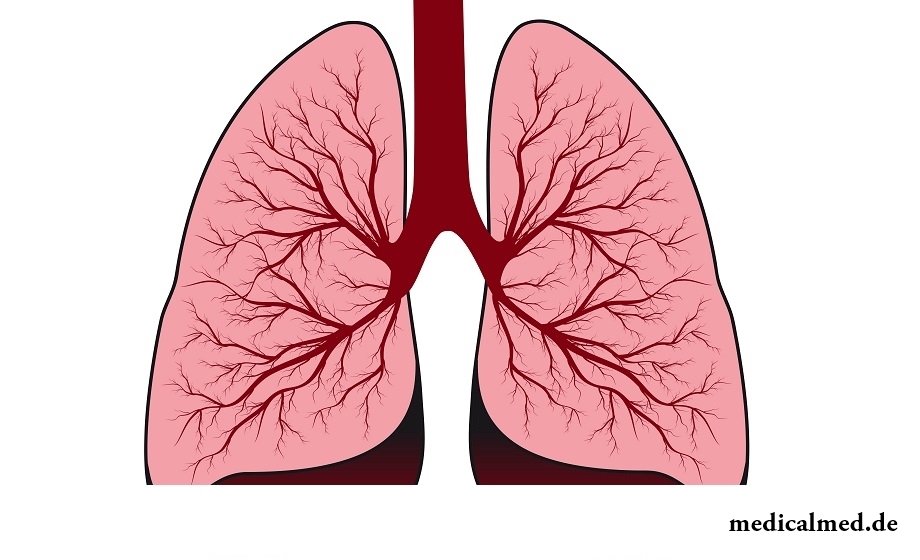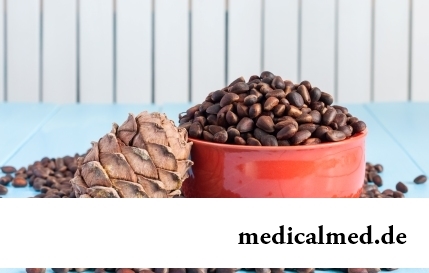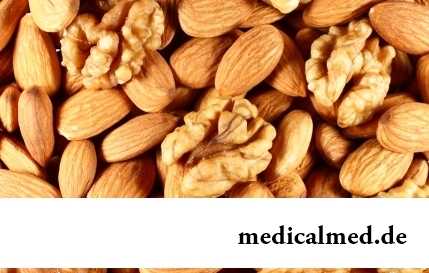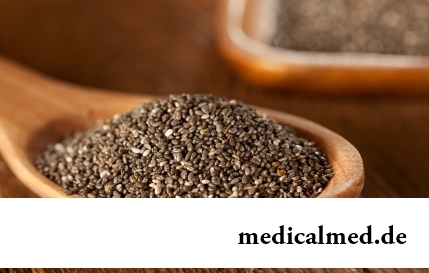





Lungs
Structure of lungs
Easy are the bodies providing breath of the person. These pair bodies are located in a chest cavity, adjoin to heart at the left and on the right. Lungs have the form of semi-cones, the basis adjacent to a diaphragm, a top of speakers clavicles on 2-3 cm are higher. The right lung has three shares, left – two. The skeleton of lungs consists from is treelike the branching bronchial tubes. Each lung is covered outside by a serous cover – a pulmonary pleura. Lungs lie in the pleural bag formed by a pulmonary pleura (visceral) and covering from within a chest cavity pristenochny pleura (parietal). Each pleura outside contains the ferruterous cells producing liquid in a cavity between leaves of a pleura (pleural cavity). On the internal (cardial) surface of each lung there is a deepening – gate of lungs. The pulmonary artery and bronchial tubes enter gate of lungs, and there are two pulmonary veins. Pulmonary arteries branch parallel to bronchial tubes.

Pulmonary fabric consists of segments of a pyramidal form, the basis turned to a surface. The bronchial tube which is consistently sharing with formation of trailer bronchioles (18-20) enters top of each segment. Each bronchiole comes to an end with an acinus – a structurally functional element of lungs. An acinus consists of alveolar bronchioles which are divided into the alveolar courses. Each alveolar course comes to an end with two alveolar sacks.
Alveoluses are the semi-spherical protrusions consisting of connective tissue fibers. They are covered by a layer of epithelial cells and plentifully braided by circulatory capillaries. In alveoluses the main function of lungs – processes of gas exchange between atmospheric air and blood is carried out. At the same time as a result of diffusion oxygen and carbon dioxide, breaking a diffusion barrier (an epithelium of alveoluses, a basal membrane, a wall of a circulatory capillary), get from an erythrocyte to an alveolus and vice versa.
Functions of lungs
The most important function of lungs is gas exchange - hemoglobin supply with oxygen, a conclusion of carbon dioxide. Intake of the air enriched with oxygen and a conclusion saturated with carbonic acid is carried out thanks to the active movements of a thorax and a diaphragm, and also sokratitelny ability of lungs. But there are also other functions of lungs. Lungs take active part in maintenance of necessary concentration of ions in an organism (acid-base equilibrium), are capable to remove many substances (aromatic substances, ethers and others). Also lungs regulate a water balance of an organism: through lungs about 0,5 l of water a day evaporate. At extreme situations (for example, a hyperthermia) this indicator can reach 10 liters a day.
Ventilation of the lungs is carried out thanks to a difference of pressure. On a breath pulmonary pressure is much lower atmospheric thanks to what air gets in lungs. On an exhalation pressure in lungs is higher than atmospheric.
There are two types of breath: costal (chest) and phrenic (belly).
- Costal breath
In places of an attachment of edges to a rachis pairs of muscles which fasten one end to a vertebra, and to others – are located to an edge. There are external and internal intercostal muscles. External intercostal muscles provide process of a breath. The exhalation normal is passive, and at pathology the act of an exhalation is helped by internal intercostal muscles.
- Diaphragmal respiration
Diaphragmal respiration is carried out with participation of a diaphragm. In the weakened state the diaphragm has the dome form. At reduction of her muscles the dome is flattened, the volume of a chest cavity at the same time increases, pressure in lungs decreases in comparison with atmospheric, and the breath is carried out. At relaxation of phrenic muscles as a result of a difference of pressure the diaphragm holds a starting position again.
Breath process regulation
Breath is regulated by inspiratory centers and an exhalation. The respiratory center is located in a myelencephalon. The receptors providing breath regulation are located in walls of blood vessels (the chemoceptors sensitive to concentration of carbon dioxide and oxygen) and on walls of bronchial tubes (the receptors sensitive to change of pressure in bronchial tubes – baroreceptors). There are also receptive fields in a carotid sine (the place of discrepancy of internal and external carotid arteries).
Lungs of the smoking person
In the course of smoking lungs are exposed to the strongest blow. The tobacco smoke getting into lungs of the smoking person contains tobacco tar (pitch), cyanic hydrogen, nicotine. All these substances accumulate in pulmonary fabric, as a result the epithelium of lungs just begins to die off. Lungs of the smoking person represent dirty-gray or even just black mass of the dying-off cells. Naturally, functionality of such lungs is significantly reduced. In lungs of the smoking person dyskinesia of cilia develops, there is a spazmirovaniye of bronchial tubes therefore the bronchial secret collects, chronic pneumonia develops, bronchiectasias form. All this leads to development of HOBL – a chronic obstructive pulmonary disease.
Pneumonia
One of a widespread serious pulmonary illness is pneumonia – pneumonia. The term "pneumonia" includes group of diseases with a different etiology, a pathogeny, clinic. Classical bacterial pneumonia is characterized by a hyperthermia, cough with department of a purulent phlegm, in some cases (when involving in process of a visceral pleura) – pleural pain. At development of pneumonia there is an expansion of a gleam of alveoluses, accumulation in them exudative liquid, penetration in them of erythrocytes, filling of alveoluses with fibrin, leukocytes. For diagnosis of bacterial pneumonia radiological methods, a microbiological research of a phlegm, laboratory analyses, studying of gas composition of blood are used. A basis of treatment is antibacterial therapy.
The well-known drug "Viagra" was initially developed for treatment of an arterial hypertension.

The hysteromyoma is diagnosed more than at a third of women 35 years are more senior. This high-quality new growth, which on early a stage...
Section: Articles about health
Is told about advantage of domestic animals for development of the child much. But many parents nevertheless do not hurry to bring pets as are afraid that they can do harm to health of children. What troubles can really trap kids and how to make with...
Section: Articles about health
All know that self-treatment is dangerous. However absolutely it is almost impossible to do without it. Rate of modern life does not allow to handle each small trouble to the doctor and information on ways of independent delivery of health care is quite available. Means, all of us have only one: to learn to give this help competently and in those limits in which it is possible for the person who does not have vocational education....
Section: Articles about health
Each person supports all life a SARS about 200 times. The peak of incidence falls on cold season, but to get sick from temperatures...
Section: Articles about health
At this plant there are a lot of names: tuberiferous sunflower, Jerusalem artichoke, solar root, earth pear. Contrary to popular belief, it is not an exotic plant at all. The wild girasol grows in a midland of Russia practically everywhere: at the edges of roads...
Section: Articles about health
Deciding to get rid of an addiction, not all imagine what effects it is necessary to face. Process of refusal of smoking causes quite essential discomfort in most of people: differences of mood, a sleep disorder, fatigue, decrease in physical and intellectual activity and a number of other symptoms reducing quality of life. Abstinence can be strong: an essential part of attempts comes to an end leaving off smoking failure, and people are returned to the use of cigars...
Section: Articles about health
Within several decades of our compatriots convinced that the use of butter nasty affects on...
Section: Articles about health
Use of medicinal plants in therapy is urgent today, more than ever. The drugs made of curative herbs cannot replace completely modern synthetic drugs, but their use becomes frequent serious help in simplification a leak...
Section: Articles about health
Turnip, radish, horse-radish – once these and other products enjoyed wide popularity at our ancestors, being not only the food sating an organism but also the medicines curing of many diseases. Unfortunately, the use of some of them got out of fashion long ago, and once favourite plants and vegetables almost ceased to make a contribution to human health. Inclusion of such products in a modern diet − an effective measure of prevention and treatment of diseases which seldom suffered...
Section: Articles about health
It is difficult to revaluate importance of kidneys for an organism. These bodies not only perform work on purification of blood of decomposition products and выв...
Section: Articles about health
Season of activity of viral infections in the heat. Everyone can get sick, but probability of this unpleasant event it is possible and it is necessary to minimize. There is a number of rules, following to which will help or to avoid absolutely infection with flu or a SARS, or to have an illness...
Section: Articles about health
Impossibility to conceive the child – a trouble of many Russian families. During quite long time was considered that main "culprits" of troubles such are women. Modern physicians claim that the situation is different: about a half of failures in attempts of reproduction are connected with male infertility....
Section: Articles about health
Dogrose – one of the most widespread adornment and medicinal plants growing practically in all territory ours...
Section: Articles about health
From the failure of work of immune system which is shown in the form of an allergy, statistically, more than 40% of the population of the globe suffer. In most cases pathological reactions cause the substances which are contained in food stuffs, hair of animals, medicines...
Section: Articles about health
The state of health of the person in many respects depends on chemical composition of biological liquids of an organism. Specialists consider that PH value of these solutions has to be in range of 7,35-7, 45. The deviation in the smaller party (so-called "acidulation") is fraught with development of many heavy illnesses, failures in work of immune system, decrease in working capacity and deterioration of life. To avoid serious fluctuations of acidity of internal liquids it is necessary to adhere разумног...
Section: Articles about health
One of the major chemical processes happening in a human body are oxidation reactions. They go with participation of fats...
Section: Articles about health
For the last decades the diabetes mellitus of the second type became really world problem. The number of cases annually increases, and average age of patients for whom the illness is diagnosed, steadily decreases. Specialists consider that one of osno...
Section: Articles about health
Scientists always aimed to offer fundamental explanations for medical problems. Their theories formed the basis of modern methods of treatment of the hardest pathologies and helped to save a set of lives. However stories are known also such theoretical constructions, following to which brought to mankind of a trouble and torture, ruined destinies and health of many people....
Section: Articles about health
All parents are ready to what the baby often and pisat much. Since then, as the absorbing diapers strongly became current...
Section: Articles about health
The chia plant, or the Spanish sage, is from South America. The indigenous people of the continent since ancient times used its seeds in food: small, but very nutritious kernels, in a form the reminding fasolina. Indians knew about useful properties of seeds of a chia, and applied...
Section: Articles about health
On the head of the person about one million hair follicles, or as they are called still, hair bulbs are located. At the time of the birth most of them is in the "sleeping" state, but within several weeks follicles become more active, and from them hair begin to grow. Intensity of this process is individual, and during life it can change. Genetic predisposition, a physical and emotional state, aggressive influence affects the growth rate of hair out of...
Section: Articles about health
The business lady, the become mother, it is necessary to solve an array of problems. But of them is main: how to combine the beloved child and work?...
Section: Slideshow
Reactive pancreatitis - the disease which is characterized by inflammatory process in a pancreas which arises most often because of excess activity of digestive enzymes. It − the emergency state which treatment has to take place in хирургич...
Section: Articles about health
History of use of an anesthesia during operations contains more than 160 years. Annually in the world hundreds of thousands of surgical interventions during which to patients the substances immersing them in a dream and saving from pain are entered are carried out. Using an anesthesia many myths and delusions are still connected. It is worth getting acquainted with the most widespread of them....
Section: Articles about health
The problem of diagnosis was and remains to one of the most important in medicine. From that, the reason недо will be how precisely defined...
Section: Articles about health
Modern footwear is extremely various. It stopped being only protection for legs long ago. Today shoes, boots, barefoot persons choose not so much proceeding from their convenience and functionality how many being guided by outward, brand and an opportunity to add with it...
Section: Articles about health
Healthy lifestyle today in fashion, and many parents think of that the child from the early childhood played sports. Trainings will help it to become strong and hardy, will improve coordination of movements, and also will exert positive impact on mentality: it will become more collected and purposeful....
Section: Articles about health
